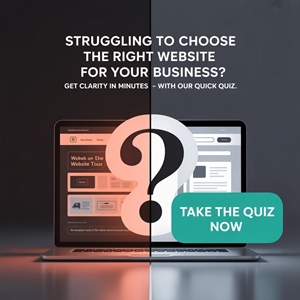Employee development goals play a vital role in enhancing team performance within any organization. By focusing on areas such as technical skills, communication, and leadership, you can nurture a more competent and engaged workforce. Setting clear objectives in these areas not merely improves individual capabilities but likewise contributes to overall team dynamics. Comprehending the various types of goals available is fundamental, as each can considerably impact your organization’s success. What are the most effective strategies for implementing these goals?
Key Takeaways
Enhance technical skills by pursuing online certifications in programming languages and data analysis to improve team capabilities.
Foster effective communication through SMART goals and active listening exercises to boost collaboration and team performance.
Develop leadership skills by setting measurable team objectives and engaging in mentorship initiatives to support junior staff growth.
Encourage networking by attending industry conferences and joining professional organizations to strengthen professional relationships and collaboration opportunities.
Implement mindfulness practices and promote creative hobbies to improve employee well-being, job satisfaction, and overall team effectiveness.
Technical Skills Development Goals
To improve your technical skills, it’s crucial to set clear development goals that align with industry demands and personal career aspirations.
Start by identifying technical skills development goals, such as enhancing proficiency in in-demand programming languages like Python or Java through online certification courses. Learning data analysis techniques using tools like Excel or SQL can greatly boost your decision-making capabilities.
Establish a timeline to master project management software, like Asana or Trello, to streamline your workflow. As cloud computing becomes increasingly important—projected to comprise over 51% of IT spending by 2025—focus on continuous upskilling in this area.
Regularly attending workshops on topics like cybersecurity or generative AI will further support your professional growth and keep you competitive in the job market.
Communication and Soft Skills Development Goals
Effective communication and soft skills are essential for success in the modern workplace, as they directly impact team dynamics and overall performance.
To set effective communication and soft skills development goals, consider development smart goals that improve your ability to collaborate. For example, aim to enhance active listening skills through exercises, which can boost emotional intelligence and increase workplace performance.
Joining organizations like Toastmasters can help you master public speaking, a key professional goal for work. Regular feedback sessions can refine interpersonal skills, improving employee satisfaction.
Furthermore, learning a relevant second language can boost cultural competence, making it easier for teams to thrive in diverse environments. These teamwork goals examples will greatly contribute to overall team effectiveness.
Leadership Development Goals
Leadership development goals are crucial for anyone looking to improve their ability to guide teams effectively and achieve organizational objectives. You can focus on leadership goals examples that cultivate skills like decisiveness, integrity, and communication.
Setting measurable team development objectives, such as leading a specific number of cross-functional projects, improves your capacity to manage diverse teams. Furthermore, mentorship initiatives can serve as significant employee development goals examples, nurturing a culture of growth among junior staff.
Participating in feedback sessions and leadership workshops boosts your conflict resolution and team-building skills, which are fundamental for maintaining high-performing teams. These performance goals examples help create a structured approach to achieving your developmental goals in the workplace, in the end driving team success.
Collaboration and Networking Goals
When you focus on collaboration and networking goals, you can greatly improve your professional connections.
Attending industry conferences and joining professional organizations can open doors to valuable resources and mentorship opportunities.
Furthermore, leveraging social media platforms effectively can help you expand your network and increase your visibility in your field, eventually supporting your career growth.
Building Professional Connections
Building professional connections is essential for nurturing collaboration and enhancing career growth. Attending industry conferences can greatly increase your networking opportunities, leading to potential collaborations and mentorship that may boost your career.
Joining professional organizations relevant to your field opens doors to valuable resources, education, and networking events that can support your career growth. Moreover, scheduling regular networking meetings with peers and mentors can strengthen professional relationships and improve overall team performance.
Set a goal to establish a specific number of new professional connections each quarter; this proactive approach will help you actively engage in your industry. By focusing on building professional connections, you can create a robust network that supports your long-term career objectives.
Social media platforms have become crucial tools for professionals looking to improve their networking and collaboration opportunities. By utilizing sites like LinkedIn, you can set performance goals that raise your professional visibility and connections.
Engaging in industry-specific groups allows you to achieve teamwork goals, interact with thought leaders, and share knowledge. These actions are key examples of employee performance goals that can lead to job opportunities—research shows 70% of professionals find jobs through social media networking.
Regularly sharing insights can help establish your personal brand, positioning you as an expert in your field. Moreover, participating in webinars and virtual events nurtures collaboration and boosts networking with peers, aligning with your personal professional goals examples.
Personal Growth and Resilience Goals
Personal growth and resilience are crucial for steering through workplace challenges.
Implementing mindfulness practices can help you manage stress and improve your emotional resilience, as well as engaging in hobbies that can boost your creativity and overall job satisfaction.
Mindfulness Practices Implementation
Implementing mindfulness practices in the workplace not just encourages personal growth but furthermore improves resilience among employees.
By integrating mindfulness practices implementation into your organization, you can achieve significant performance goals for work, benefiting both individuals and teams.
Consider these effective strategies:
Daily meditation sessions to boost focus and reduce stress
Deep-breathing exercises for quick emotional regulation
Mindfulness training programs customized to your team’s needs
Regular check-ins to assess engagement and well-being
Workshops on emotional intelligence to improve communication
These team goals examples can lead to a 32% reduction in stress levels and a 25% increase in productivity.
Hobbies for Creativity Enhancement
As mindfulness practices lay the groundwork for a resilient workforce, exploring hobbies can further improve creativity and personal growth. Engaging in creative hobbies like painting, writing, or playing an instrument stimulates innovative thinking, crucial for achieving teamwork goals and objectives examples.
Research shows that these activities reduce stress, improving overall mental well-being and resilience. Hobbies involving physical activity, such as dancing or hiking, boost cognitive function and productivity by enhancing blood circulation.
Collaborative hobbies, like team sports or group art projects, teach teamwork and communication skills, important for workplace collaboration. Dedicating time to these creative pursuits can improve problem-solving abilities, aligning with performance management goals examples and personal goals and professional goals examples for extensive development.
Certification and Formal Learning Goals
When employees pursue industry-recognized certifications and engage in formal learning opportunities, they not only improve their skills but also increase their value within the organization.
Setting certification and formal learning goals can lead to significant benefits. Consider these examples of employee goals:
Earn a PMP certification to boost project management skills.
Complete an AWS Certified Solutions Architect course for cloud computing expertise.
Attend workshops to develop leadership abilities.
Finish online courses to sharpen technical skills.
Achieve at least one certification per year to stay focused on career development goals.
These performance goals examples can lead to increased job satisfaction, productivity, and a reduction in turnover rates, eventually contributing to improved job performance and overall organizational success.
Performance Improvement Goals
Establishing performance improvement goals is essential for enhancing individual effectiveness and contributing to overall organizational success.
Start by defining performance goals, which are measurable targets aimed at improving specific areas. For instance, consider development goals examples at work that focus on increasing productivity by at least 15% within a defined timeframe.
Use performance objectives examples to create structured action plans that outline necessary steps, resources, and timelines. Regularly seek feedback from supervisors and peers to track progress, making adjustments as needed.
Documenting achievements and challenges related to these goals helps inform future performance strategies. These structured approaches not only encourage continuous improvement but also serve as good work goals that align with broader organizational objectives, ensuring everyone moves in the direction of success together.
Frequently Asked Questions
What Are Good Examples of Professional Development Goals?
Good examples of professional development goals include enhancing technical skills through relevant certifications, improving public speaking by attending workshops and giving presentations, and developing leadership qualities via mentoring and training programs.
You might likewise aim to attend industry conferences to expand your network and stay updated on trends.
Furthermore, focusing on time management techniques can boost productivity.
Setting specific, measurable objectives helps track your progress and guarantees continuous growth in your career.
What Are the 5 Smart Goals Examples for Employees?
When setting SMART goals, consider these five examples:
First, aim to complete a specific certification within six months to improve your skills.
Second, set a measurable target, like increasing customer satisfaction scores by 20% in a quarter.
Third, commit to attending two industry conferences annually for networking.
Fourth, focus on improving public speaking by presenting monthly.
Finally, establish a time-bound goal to reduce project completion time by 10% over three months.
What Are Some Good Goals for a Team?
To set effective team goals, focus on measurable outcomes. For instance, aim to boost productivity by 15% through improved collaboration.
Implement regular feedback sessions to improve communication, targeting a 20% increase in satisfaction scores.
Encourage innovation by generating ten new process ideas monthly.
Promote cross-departmental projects, increasing collaboration by 25%, and conduct quarterly team-building activities to reduce conflicts by 30%.
These goals will improve overall team performance and cohesion.
What Are the 5 Performance Objectives Examples?
You can consider various performance objectives to guide your team effectively.
One example is increasing productivity by 15% through improved workflows within six months. Another could be reducing error rates by 10% through improved training sessions over the next quarter.
You might likewise aim for a 20% boost in team collaboration via regular brainstorming meetings. Furthermore, setting a goal to improve project delivery times by 25% can streamline operations.
Finally, elevating client feedback scores by 15% within a year is vital.
Conclusion
In summary, setting clear employee development goals is vital for enhancing team performance. By focusing on technical skills, communication, leadership, collaboration, personal growth, and formal learning, organizations can nurture a culture of continuous improvement. These goals not just equip employees with necessary skills but additionally promote engagement and resilience within teams. In the end, investing in employee development drives productivity and contributes to the overall success of the organization, making it a worthwhile endeavor for any business.
Image Via Envato
Source:SmallBizTrends | Read the Full Story…











